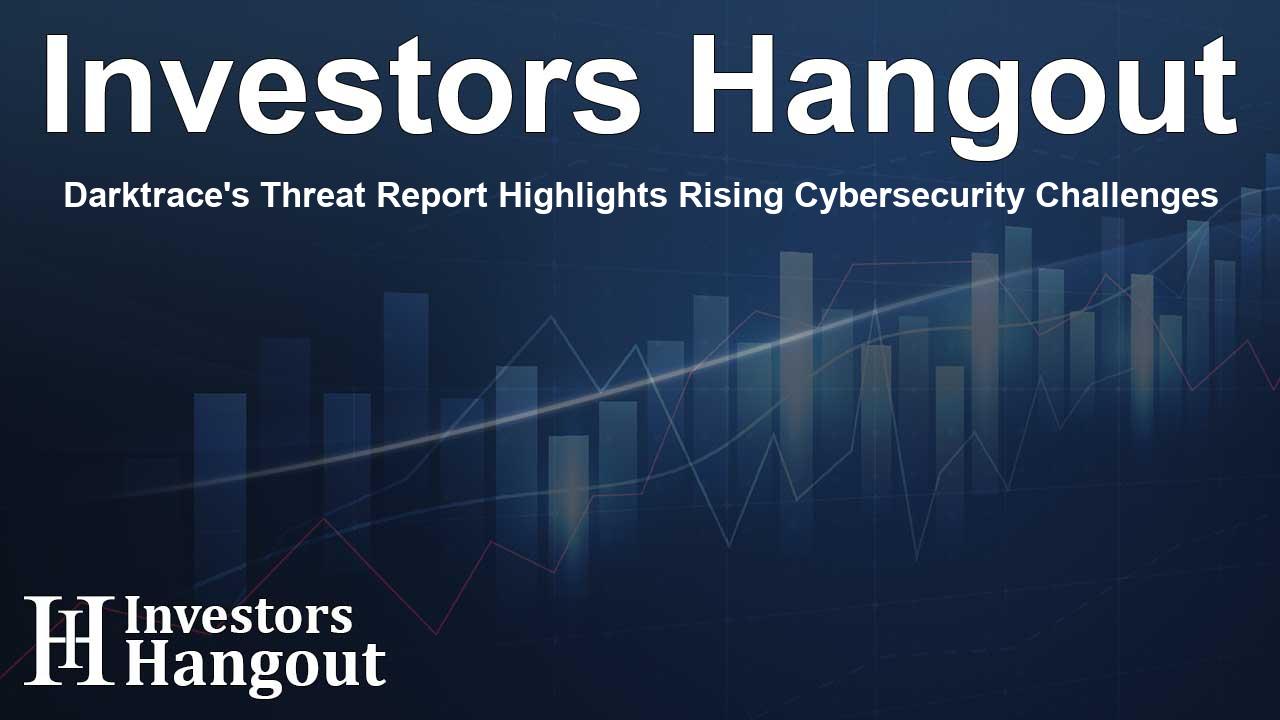Darktrace's Threat Report Highlights Rising Cybersecurity Challenges

Darktrace's Key Findings on Cyber Security Threats in 2024
Darktrace, a pioneering force in cybersecurity, recently unveiled its latest findings from the 2024 Annual Threat Report. This report underscores a significant trend in the cybersecurity landscape, showing that Malware-as-a-Service (MaaS) has now become a dominant threat, accounting for an alarming 57% of all cyber threats detected. This marks a notable 17% increase since the first half of the year, making it clear that cybercriminals are evolving rapidly to exploit new technologies and vulnerabilities.
The Growing Threat of Malware-as-a-Service
The rise in MaaS contributions to the overall threat landscape signifies not only an uptick in cyberattack frequency but also suggests that these threats are becoming more sophisticated and accessible to less skilled cybercriminals. Ransomware-as-a-Service (RaaS) and other forms of Cybercrime-as-a-Service (CaaS) have proliferated. In the latter half of 2024, the usage of MaaS tools surged dramatically, highlighting the importance of reinforcing cybersecurity defenses within organizations.
Remote Access Trojans on the Rise
During the same period, the presence of Remote Access Trojans (RATs) surged as well, now making up 46% of the detected campaign activities. These RATs allow attackers to control infected devices from afar, paving the way for serious breaches such as data theft and surveillance. This alarming trend calls for immediate attention to safeguard sensitive information and maintain organizational integrity.
Phishing: A Persistent Threat
Phishing attacks continued to dominate the threat landscape, with more than 30.4 million phishing emails detected across Darktrace's extensive customer network in a recent analysis. It is notable that 38% of these emails were identified as spear phishing attempts, targeting high-value individuals. This underscores the fact that malicious actors are investing significant time and effort to craft increasingly sophisticated and targeted phishing campaigns.
Adaptation of Attack Techniques
Furthermore, attackers are creatively leveraging trusted platforms such as document-sharing services to lend credibility to their attacks. This strategy allows them to bypass conventional security measures, raising the stakes for organizations unaware of the tactics being employed against them. It reflects a relentless evolution in the methods that cybercriminals use to exploit both technology and human behavior.
Evading Detection: The New Normal
Today's cyber threats increasingly focus on evasion tactics, employing vulnerabilities found in edge devices and utilizing Living-off-the-Land (LOTL) strategies, where attackers repurpose legitimate tools for malicious activities. This approach not only complicates detection but also highlights the need for continuous monitoring and advanced threat mitigation strategies.
Vulnerabilities in Network Technologies
Research from Darktrace shows that a substantial portion of the identified attacks has involved the exploitation of vulnerabilities in perimeter technologies such as firewall devices. This indicates that regarding device integrity is crucial in preventing unauthorized access and ensuring a secure environment.
Conclusion and Recommendations
Nathaniel Jones, the VP of Threat Research at Darktrace, emphasizes the necessity of incorporating cyber resilience into organizational practices. The shortfalls of traditional security measures demand a paradigm shift, where entities prioritize proactive defenses over reactive measures. As threats grow more nuanced, organizations must reevaluate their security strategies, focusing on advanced detection capabilities and comprehensive training programs for employees to recognize sophisticated phishing attempts.
Frequently Asked Questions
What is the significance of Darktrace's research on MaaS?
Darktrace's research reveals that Malware-as-a-Service now constitutes 57% of detected threats, indicating a substantial increase in cybercrime accessibility and threat sophistication.
How has the nature of phishing attacks evolved?
The recent report indicates phishing tactics are evolving, with 38% identified as spear phishing, indicating a targeted approach towards specific individuals.
What challenges do Remote Access Trojans present?
RATs allow attackers to remotely control infected devices, which can lead to serious threats such as data theft and unauthorized surveillance.
How are attackers adapting their techniques?
Attackers are increasingly leveraging trusted platforms and social engineering techniques to bypass traditional security measures, enhancing their success rates.
What measures can organizations take to improve cybersecurity?
Organizations should enhance their cybersecurity frameworks by adopting proactive defenses, continuous monitoring, and educating employees on recognizing potential threats.
About The Author
Contact Kelly Martin privately here. Or send an email with ATTN: Kelly Martin as the subject to contact@investorshangout.com.
About Investors Hangout
Investors Hangout is a leading online stock forum for financial discussion and learning, offering a wide range of free tools and resources. It draws in traders of all levels, who exchange market knowledge, investigate trading tactics, and keep an eye on industry developments in real time. Featuring financial articles, stock message boards, quotes, charts, company profiles, and live news updates. Through cooperative learning and a wealth of informational resources, it helps users from novices creating their first portfolios to experts honing their techniques. Join Investors Hangout today: https://investorshangout.com/
The content of this article is based on factual, publicly available information and does not represent legal, financial, or investment advice. Investors Hangout does not offer financial advice, and the author is not a licensed financial advisor. Consult a qualified advisor before making any financial or investment decisions based on this article. This article should not be considered advice to purchase, sell, or hold any securities or other investments. If any of the material provided here is inaccurate, please contact us for corrections.
